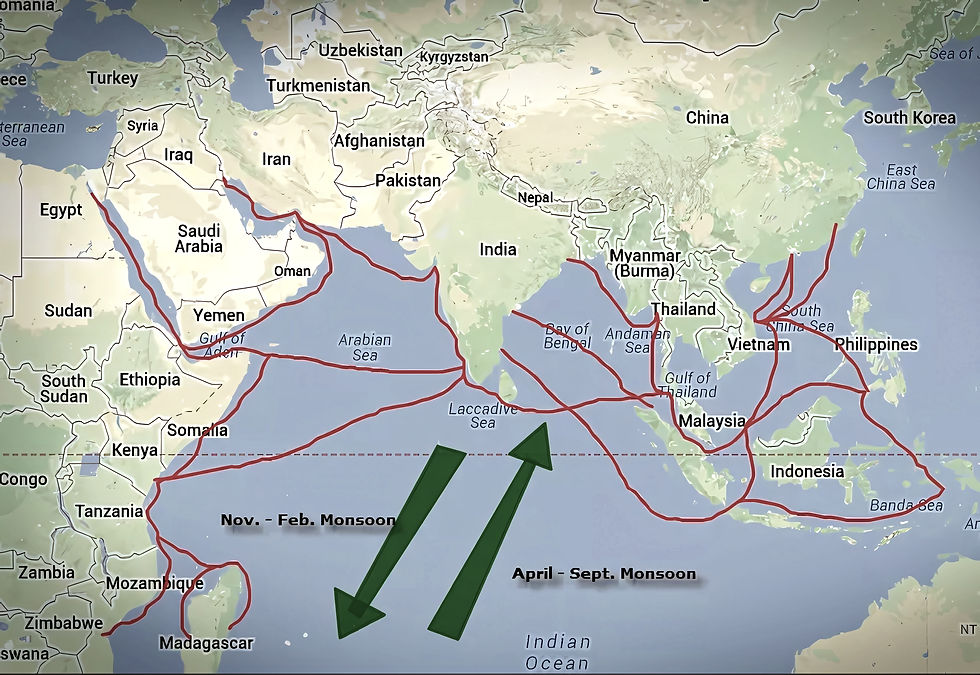3. Eastward Expansion to South-East Asia and China
- Kerry Paul

- May 4
- 2 min read
Updated: Nov 7
How India shaped the world: I recently visited India to explore how this country evolved and what drives it today. In the 1,450 years from about 250 BC to 1200 AD (called The Common Period), Indian religion, trade, science, technology, mathematics, and culture had a profound impact across the world from the Red Sea to the Pacific. Notably, the strength of India’s ideas was key to spreading its influence—not through the power of its sword!

Eastward Trade
Trade between India and Southeast Asia began about 2,500 years ago when sailors from southern India and Ceylon (modern-day Sri Lanka) ventured into the Indonesian archipelago. As traders moved across the region, they carried their religions with them. Hindu kingdoms emerged as early as 2,300 years ago, followed by Buddhist ones around 2,000 years ago. A close relationship developed between the traders and the newly established religious communities.
By the 1st century CE, a vast maritime trade network connected Rome, the Mediterranean, North Africa, the Indian Ocean, Indonesia, and China, with India at its centre. The Red Sea linked to the Mediterranean via a short overland route through Egypt, followed by ship transport along the Nile completed the network.

When gold supplies from Africa and the Middle East declined sharply in the 4th and 5th centuries CE, Indian traders intensified their engagement with the East. This marked the pursuit of Suvarnabhumi—“The Lands of Gold.”
New urban centres emerged in present-day Sri Lanka, Indonesia, Myanmar, Malaysia, Thailand, Laos, Vietnam, and Cambodia to facilitate trade with Indian merchants. These traders, carried eastward by the monsoon winds, brought cargoes of beads, textiles, and metal goods, which they exchanged for spices, camphor, resin, and other raw materials. They were also drawn to the region’s rich gold deposits, found in Sumatra, Sarawak, the Malay Peninsula, and parts of the mainland.
By the 5th century CE, a major sea route had been established through the Straits of Malacca, linking Indian traders directly to China. The summer monsoon facilitated a swift journey—taking approximately three weeks from Sri Lanka to Sumatra, and less than a month from there to Guangzhou.
South-East Asia became a major hub of global trade, serving as a meeting point for Indian and Chinese merchants. The region evolved into a “melting pot” of diverse cultures. A striking example is Bali, a modern-day holiday destination that reflects a unique form of Hinduism resulting from this cultural blending.
India’s influence on South-East Asia is profound, particularly through the spread of Hinduism and Buddhism. This influence is evident in the region's architecture, language, literature, and political systems. Iconic structures such as Angkor Wat in Cambodia and Borobudur in Indonesia showcase Indian cultural imprints. This phenomenon is often referred to as the "Indianization" of South-East Asia, where local rulers adopted Indian concepts of kingship, statehood, and religious practices, integrating them with their own traditions.
Your next read in the series: 4. Role of the Monsoon Winds










Comments